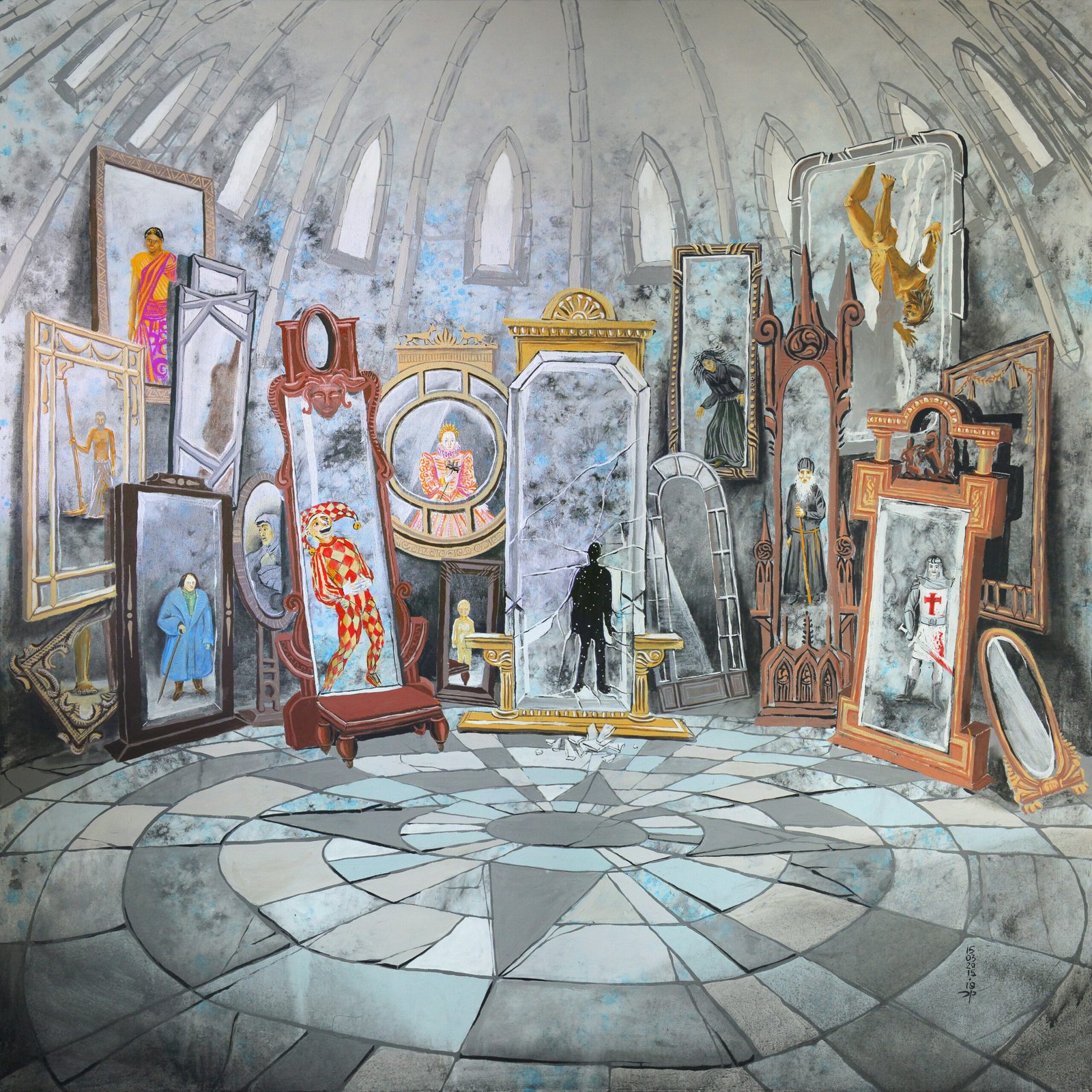Character archetypes are the backbone of storytelling. They create a familiar framework that resonates with audiences across cultures and generations. From ancient myths to modern blockbusters, these universal roles help shape narratives and guide character development.
Whether you’re writing a novel, crafting a screenplay, or even spinning tales for social media, understanding character archetypes can elevate your storytelling game. Each archetype carries its own distinct traits and motivations, making them essential tools for writers seeking depth in their characters.
So what exactly are these archetypal figures? And how do they play out in our favorite stories? Let’s dive into the fascinating world of character archetypes and explore how they can transform your narrative into something unforgettable.
The Hero/Heroine
The Hero or Heroine stands at the center of every compelling story. This character embodies courage, resilience, and the quest for justice. They often face insurmountable odds but never waver in their determination.
Heroes come in various forms. Some are born leaders, while others rise to greatness through personal struggles. Their journeys are marked by growth and self-discovery, making them relatable and inspiring.
A quintessential hero may seem ordinary at first glance; however, they possess a unique strength that sets them apart when challenges arise. Whether it’s Harry Potter facing dark forces or Katniss Everdeen standing against tyranny, these characters ignite hope within us all.
In essence, heroes remind us of our potential to overcome adversity. Their stories resonate deeply because we see reflections of ourselves in their trials and triumphs.
The Mentor
The Mentor serves as the guiding light in a story. This character often possesses wisdom and experience, nurturing the main protagonist’s growth. They are not just teachers but also sources of inspiration.
Mentors challenge their protégés to step outside their comfort zones. They provide essential skills and knowledge while offering moral support during tough times. The relationship between a mentor and mentee can be dynamic, filled with both challenges and triumphs.
Classic examples include characters like Gandalf from “The Lord of the Rings” or Mr. Miyagi from “The Karate Kid.” Both figures embody intelligence, strength, and compassion.
Through guidance, mentors help heroes realize their potential. Their influence is crucial for navigating obstacles on the journey ahead. In many tales, it’s this bond that transforms ordinary individuals into extraordinary ones.
The Villain
Every story needs a compelling antagonist. The villain plays a crucial role in driving the plot forward and challenging the hero’s resolve. Their motives often stem from deep-seated desires or traumas, adding layers to their character.
Villains aren’t just evil for the sake of being bad; they believe in their cause. This complexity makes them intriguing and relatable on some level. Think about iconic figures like Darth Vader or Loki—characters who evoke both fear and sympathy.
A well-crafted villain pushes the protagonist to evolve, highlighting their strengths and weaknesses. They represent obstacles that must be overcome, forcing heroes into action.
The presence of a formidable foe adds tension to any narrative. It keeps audiences engaged as they root for good over evil while grappling with moral dilemmas along the way.
The Sidekick
The Sidekick often acts as the heart of a story, providing comic relief or emotional support. This character is essential to the Hero’s journey, balancing strengths and weaknesses.
Often portrayed as loyal and quirky, they bring depth to the narrative. Their unwavering friendship can help humanize the protagonist, making them more relatable.
Think of Robin with Batman or Samwise Gamgee alongside Frodo. These characters offer guidance through tough times while adding humor and warmth. Their unique perspectives challenge heroes to reconsider their choices.
While sometimes overshadowed by main characters, Sidekicks hold immense value. They reflect our own vulnerabilities and aspirations. Audiences connect with them because they embody qualities we admire—loyalty, bravery in lesser-known ways, and an unyielding spirit despite adversity.
In essence, without a memorable Sidekick, many stories would lack that crucial spark that keeps viewers engaged.
The Scapegoat
The Scapegoat plays a crucial role in narratives across cultures. This character often carries the weight of others’ failures or misdeeds. By absorbing blame, they serve as a catalyst for change within the story.
Typically misunderstood, the Scapegoat evokes sympathy from audiences. Their journey highlights themes of sacrifice and redemption. They may not be the villain, but society’s projections often paint them that way.
This archetype can emerge in various forms—a victim of circumstance, an innocent bystander caught in conflict, or even a rebellious soul who challenges norms. The presence of this character allows others to confront their flaws without bearing direct responsibility.
In many tales, the Scapegoat ultimately transcends their role through personal growth or self-discovery. Their experience sheds light on broader societal issues and invites reflection on morality and justice within narrative frameworks.
The Rebel
The Rebel challenges the status quo. This character thrives on defiance and nonconformity, often igniting change where stagnation exists. Their journey typically begins with a sense of dissatisfaction, pushing them to question authority or societal norms.
Driven by passion, Rebels possess an unyielding spirit that inspires others. They may not always have a clear plan but are fueled by their convictions. Whether through bold actions or striking words, they create tension and excitement in the story.
Consider iconic figures like Katniss Everdeen from “The Hunger Games.” Her unwillingness to accept oppression resonates deeply with audiences. The Rebel embodies freedom and individuality—elements that resonate universally across cultures and eras.
Through their struggles, we see reflections of our own desires for authenticity and justice. These characters remind us that breaking away from conformity can lead to profound transformations in both themselves and those around them.
The Trickster
The Trickster is a captivating character archetype that thrives on mischief and chaos. This figure bends the rules of reality, often challenging societal norms. With their cunning wit, they expose the absurdities in life.
Tricksters are unpredictable. They bring humor and levity to serious situations while simultaneously forcing other characters—and the audience—to confront uncomfortable truths. Their antics can lead to unexpected revelations or simply chaotic fun.
Think of classic examples like Loki from Norse mythology or Bugs Bunny from animation history. Both embody traits that keep everyone guessing what will happen next.
In storytelling, the Trickster acts as a catalyst for change. Their ability to navigate through challenges with cleverness often inspires others to break free from constraints and explore new possibilities.
The Damsel in Distress
The Damsel in Distress is a classic character archetype that often finds herself trapped in perilous situations. She embodies vulnerability, capturing the audience’s empathy and urging heroes to leap into action.
Traditionally, she relies on her savior—often a heroic figure—to rescue her from danger. While this trope can be seen as outdated, it offers rich opportunities for growth. Many modern interpretations subvert expectations by giving these characters agency and depth.
In contemporary storytelling, the Damsel may not just wait passively for help. Instead, she actively fights against her circumstances or uses clever wit to escape on her own terms.
This transformation reshapes the narrative landscape and inspires new tales of courage and resilience. By redefining what it means to be “in distress,” storytellers breathe fresh life into this age-old role while still honoring its origins.
How to Use Archetypes in Storytelling
Understanding character archetypes is essential for crafting compelling narratives. Start by identifying the core roles your characters will play. This clarity helps in developing their motivations and actions.
Integrate archetypes into your plot structure effectively. For example, a Hero’s journey often intersects with a Mentor who provides guidance at critical moments. These dynamics can create tension and depth.
Don’t shy away from mixing archetypes within characters. A Rebel might also have traits of a Trickster, adding layers to their personality that keep readers intrigued.
Consider how these archetypal roles interact with one another. The Villain should challenge the Hero but may also exhibit complexity that evokes sympathy or understanding.
Above all, let these archetypes serve as foundations rather than strict templates. Allow creative freedom to shape them uniquely while keeping their fundamental qualities intact.
Examples of Famous Characters as Archetypes
Sherlock Holmes exemplifies the Hero archetype. His sharp intellect and relentless pursuit of justice captivate audiences, showcasing the classic traits of a hero who solves mysteries.
In contrast, Yoda from “Star Wars” embodies the Mentor archetype. He guides Jedi with wisdom, teaching them to harness their powers for good while facing overwhelming odds.
The Joker stands out as the Villain. Chaotic and unpredictable, he challenges Batman’s morals and pushes him to his limits.
Samwise Gamgee serves as an excellent Sidekick in “The Lord of the Rings.” His loyalty helps Frodo throughout their perilous journey across Middle-earth.
Then there’s Katniss Everdeen, representing The Rebel. She defies oppressive forces in her dystopian world, igniting hope among her people.
Think about Cinderella for The Damsel in Distress. Her plight captivates hearts as she transforms from mistreatment to triumph through love and magic.
Conclusion
Character archetypes are essential tools in storytelling, providing a framework that resonates with audiences across cultures and time periods. Whether you’re crafting a novel, screenplay, or even a short story, understanding these universal roles can enhance your narrative.
By incorporating character archetypes such as the Hero/Heroine, Mentor, Villain, Sidekick, Scapegoat, Rebel, Trickster, and Damsel in Distress into your work, you can create dynamic interactions and compelling plots. Each archetype serves its purpose within the larger tapestry of your story.
Moreover, famous characters from literature and film exemplify how effectively these roles can engage an audience. Think of Harry Potter as the hero guided by Dumbledore (the mentor) while facing off against Voldemort (the villain). These recognizable patterns not only make stories relatable but also enrich our understanding of human behavior.
Employing character archetypes strategically allows writers to tap into deeply rooted psychological motifs. This approach fosters connection with readers or viewers on multiple levels—emotionally and intellectually.
As you develop your narratives further using these timeless archetypal frameworks; you’ll find they offer both structure and flexibility crucial for captivating storytelling that stands out in today’s saturated media landscape. Embrace them to breathe life into your characters and craft unforgettable tales that resonate long after the last page is turned or scene fades away.

